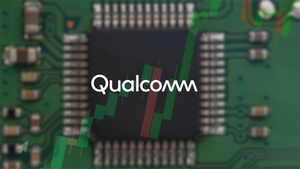All eight (100%) treatment-arm patients are relapse-free and have achieved and maintained complete donor chimerism following treatment with TSC-100 or TSC-101
Patient with high-risk, TP53-mutated MDS is relapse-free for over one year following treatment with TSC-101
Patient with AML converted from detectable to undetectable disease following treatment with TSC-101
Data presented at TANDEM meeting suggests complete donor chimerism is an early indicator of treatment success
Company to host virtual KOL event today, Monday, February 26, at 8:00 a.m. ET, to discuss the data presented at the 2024 Tandem Meetings
WALTHAM, Mass., Feb. 26, 2024 (GLOBE NEWSWIRE) -- TScan Therapeutics, Inc. (Nasdaq: TCRX), a clinical-stage biopharmaceutical company focused on the development of T cell receptor (TCR)-engineered T cell therapies (TCR-T) for the treatment of patients with cancer, today announced an oral presentation at the 2024 Tandem Meetings: Transplantation & Cellular Therapy Meetings of the American Society for Transplantation and Cellular Therapy (ASTCT®) and the Center for International Blood and Marrow Transplant Research (CIBMTR®). The oral presentation, selected for the plenary session as a Best Abstract, highlights updated data from the Phase 1 multi-arm clinical trial evaluating TSC-100 and TSC-101, designed to treat residual disease and prevent relapse following hematopoietic cell transplantation (HCT) in patients with acute myeloid leukemia (AML), myelodysplastic syndromes (MDS), or acute lymphocytic leukemia (ALL) (NCT05473910).
“We are excited to report updated data from our heme program, with eight patients across our treatment arms and six patients in our control arm. We remain encouraged to see that no relapses have occurred to date in treated patients, four of whom have been on the study for over ten months. One patient with high-risk, TP53-mutated MDS has now reached the one-year mark following treatment with TSC-101, a meaningful milestone as the likelihood of relapse decreases significantly over time, leading to an improved quality of life,” said Debora Barton, M.D., Chief Medical Officer. “We have also enrolled six patients in the control arm, receiving transplant alone. To date, two control-arm patients relapsed following transplant, at days 161 and 180, and one of these patients succumbed to the relapse at day 265. A third patient required clinical intervention at day 133 because of concerns of impending relapse.”
“Sustained complete donor chimerism may be the most valuable indicator of treatment success,” added Gavin MacBeath, Ph.D., Chief Executive Officer. “HCT is currently the best treatment option for many patients suffering from AML, MDS, and ALL, as approximately 60% of patients are cured by this treatment. Unfortunately, roughly 40% of patients relapse following HCT, at which point there are limited treatment options and a poor prognosis. Donor chimerism measures any remaining patient-derived hematopoietic cells that could potentially lead to relapse. We are using a high-sensitivity next-generation sequencing assay to track donor chimerism in all patients in our study. We are encouraged to see that all eight patients treated with our cell therapy products achieved and maintained complete donor chimerism at every time-point, with four of these patients past the 10-month mark. This is a very good sign for these patients, and we look forward to sharing follow-up data, as well as data on additional patients, as the study continues to enroll in 2024.”
The Phase 1 trial is a multi-arm dose escalation study evaluating TSC-100 and TSC-101, which are designed to treat residual disease and prevent relapse following HCT in patients with AML, ALL or MDS undergoing haploidentical donor allogeneic HCT with reduced intensity conditioning. Primary endpoints include safety and dose-finding, and secondary and exploratory endpoints include relapse rates versus standard-of-care (HCT alone) as well as supportive surrogates of efficacy, including donor chimerism and minimal residual disease (MRD). MRD identifies any residual disease-related DNA present in a patient, and chimerism measures any remaining recipient-derived hematopoietic cells in a patient following HCT (NCT05473910).
Key Presentation Highlights Include:
TSC-100 treatment arm (N=4: T-ALL, AML, AML, MDS)
- 4/4 patients treated with TSC-100 achieved complete donor chimerism with no relapse.
TSC-101 treatment arm (N=4: TP53-mutated MDS, AML, B-ALL, B-ALL)
- 4/4 patients treated with TSC-101 achieved complete donor chimerism with no relapse, including a patient with high-risk, TP53-mutated MDS who has reached one year of follow-up.
- One patient with AML was MRD-positive following HCT and converted to and maintained MRD-negative status following treatment with TSC-101 (most recent measurement at day 180).
TSC-100 and TSC-101 persistence noted for prolonged periods:
- Persistence of TSC-100 and TSC-101 was observed at all time points after dosing, with the longest follow-up of over 9 months.
- Repeat dosing (dose levels 2 and 3) led to a 3-fold increase in circulating TSC-100 and TSC-101 levels compared to single dosing (dose level 1) at the same time points.
Six control arm patients (MDS, MDS, MDS, AML, AML, AML) have been enrolled and received standard of care HCT alone:
- One control-arm patient with high-risk, TP53-mutated MDS evolved with MRD positivity and worsening mixed chimerism, experienced clinical relapse approximately six months post-transplant, and succumbed to relapse approximately nine months post-transplant.
- One control-arm patient with MDS experienced clinical relapse approximately five months post-transplant.
- One control-arm patient with MDS developed worsening mixed chimerism requiring early termination of immunosuppression, resulting in complete donor chimerism but with grade 1 skin graft-versus-host disease.
- One control-arm patient never achieved complete donor chimerism, with more than four months follow-up post-transplant.
- 2/6 control-arm patients achieved complete donor chimerism following HCT.
Virtual KOL Event
The Company will host a virtual KOL event featuring:
- Monzr M. Al Malki, M.D., Associate Professor in the Department of Hematology & Hematopoietic Cell Transplantation and Director of the Unrelated Donor Bone Marrow Transplant and Haploidentical Transplant Programs at City of Hope
- Ran Reshef, M.D., M.Sc., Professor of Medicine and Director of the Cellular Immunotherapy Program at Columbia University Irving Medical Center
The conference call will be held today, February 26, at 8:00 a.m. ET, to discuss the data presented at the Tandem Meetings. Details for attending the live event can be found here. A replay will be made available on the “Events and Presentations” section of the Company’s investor relations website at ir.tscan.com.
About TScan Therapeutics, Inc.
TScan is a clinical-stage biopharmaceutical company focused on the development of T cell receptor (TCR)-engineered T cell therapies (TCR-T) for the treatment of patients with cancer. The Company’s lead TCR-T therapy candidates, TSC-100 and TSC-101, are in development for the treatment of patients with hematologic malignancies to eliminate residual disease and prevent relapse after allogeneic hematopoietic cell transplantation. The Company is also developing multiplexed TCR-T therapy candidates for the treatment of various solid tumors. The Company has developed and continues to expand its ImmunoBank, the Company’s repository of therapeutic TCRs that recognize diverse targets and are associated with multiple HLA types, to provide customized, enhanced, multiplexed TCR-T therapies for patients with a variety of cancers.
Forward-Looking Statements
This release contains forward-looking statements within the meaning of the Private Securities Litigation Reform Act of 1995, including, but not limited to, express or implied statements regarding the Company’s plans, progress, and timing relating to the Company’s hematologic malignancies program, including the potential implications of initial data from a large prospective clinical trial, presentation of additional data, and potential indicators of treatment success; the potential benefits of any of the Company’s current or future product candidates in treating patients; and the Company’s goals and strategy. TScan intends such forward-looking statements to be covered by the safe harbor provisions for forward-looking statements contained in Section 21E of the Securities Exchange Act of 1934 and the Private Securities Litigation Reform Act of 1995. In some cases, you can identify forward-looking statements by terms such as, but not limited to, “may,” “might,” “will,” “objective,” “intend,” “should,” “could,” “can,” “would,” “expect,” “believe,” “anticipate,” “project,” “target,” “design,” “estimate,” “predict,” “potential,” “plan,” “on track,” or similar expressions or the negative of those terms. Such forward-looking statements are based upon current expectations that involve risks, changes in circumstances, assumptions, and uncertainties. The express or implied forward-looking statements included in this release are only predictions and are subject to a number of risks, uncertainties and assumptions, including, without limitation: the beneficial characteristics, safety, efficacy, therapeutic effects and potential advantages of TScan’s TCR-T therapy candidates; TScan’s expectations regarding its preclinical studies being predictive of clinical trial results; the timing of the initiation, progress and expected results of TScan’s preclinical studies, clinical trials and its research and development programs; TScan’s plans relating to developing and commercializing its TCR-T therapy candidates, if approved, including sales strategy; estimates of the size of the addressable market for TScan’s TCR-T therapy candidates; TScan’s manufacturing capabilities and the scalable nature of its manufacturing process; TScan’s estimates regarding expenses, future milestone payments and revenue, capital requirements and needs for additional financing; TScan’s expectations regarding competition; TScan’s anticipated growth strategies; TScan’s ability to attract or retain key personnel; TScan’s ability to establish and maintain development partnerships and collaborations; TScan’s expectations regarding federal, state and foreign regulatory requirements; TScan’s ability to obtain and maintain intellectual property protection for its proprietary platform technology and our product candidates; the sufficiency of TScan’s existing capital resources to fund its future operating expenses and capital expenditure requirements and execute on upcoming anticipated milestones into 2026; and the effect of the COVID-19 pandemic, including mitigation efforts and political, economic, legal and social effects, on any of the foregoing or other aspects of TScan’s business or operations; and other factors that are described in the “Risk Factors” and “Management’s Discussion and Analysis of Financial Condition and Results of Operations” sections of TScan’s most recent Annual Report on Form 10-K and any other filings that TScan has made or may make with the SEC in the future. Any forward-looking statements contained in this release represent TScan’s views only as of the date hereof and should not be relied upon as representing its views as of any subsequent date. Except as required by law, TScan explicitly disclaims any obligation to update any forward-looking statements.
Contacts
Heather Savelle
TScan Therapeutics, Inc.
VP, Investor Relations
857-399-9840
hsavelle@tscan.com
Joyce Allaire
LifeSci Advisors, LLC
Managing Director
617-435-6602
jallaire@lifesciadvisors.com







